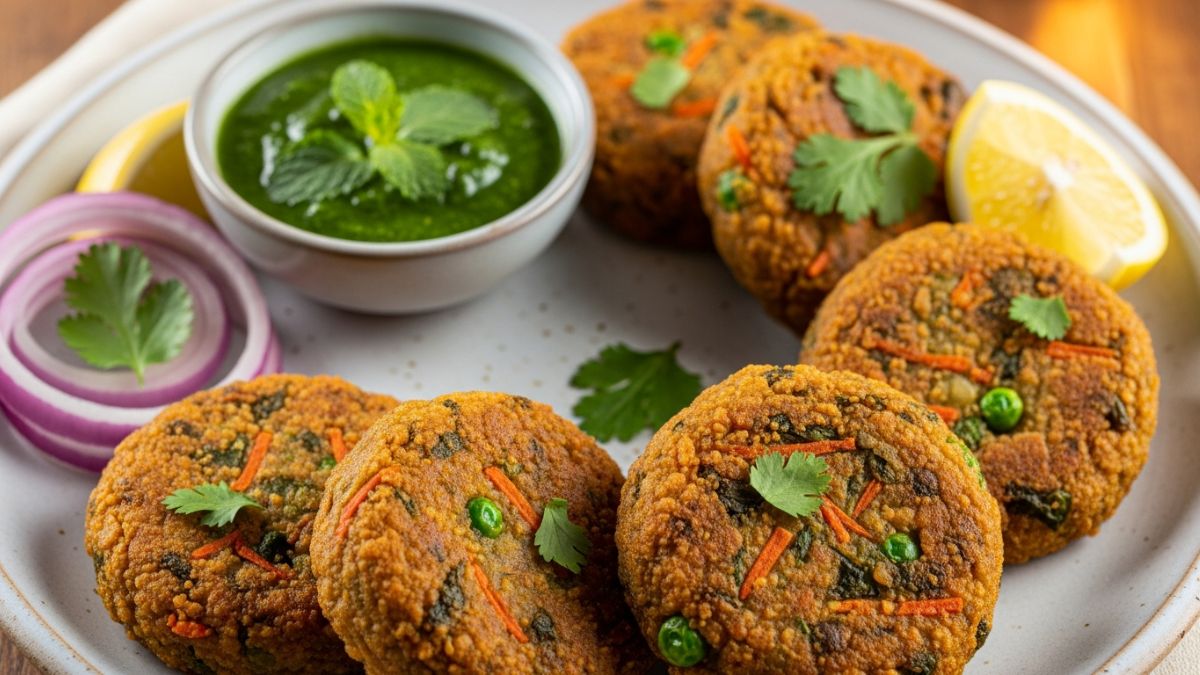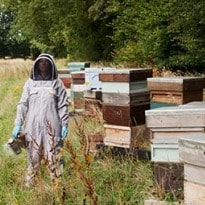Honey varies in flavour from hive to hive, but that doesn't begin to describe the talents of Becky Chadd's amazing bees.
Bees are very intelligent insects, with amazing communication and organisational skills. When a bee finds a good source of nectar, it comes back to the hive and does what's called a "waggle" dance, to tell the others where it is. It moves around in a figure of eight and, through the length of the loops and direction of waggle, it passes on the exact location of the nectar to the rest of the colony.
I began beekeeping as a hobby, when my children were small and I'd given up my job in publishing to look after them. I took a course, then got a couple of hives and ended up with more honey than we could possibly eat. I started selling it to local shops and the business grew from there.
I have 150 colonies now, dotted around Hampshire and Berkshire. The flavour and colour of the honey depends on the flowers and can vary between locations and even between adjacent hives. Some of the bees feed on mixed flowers from local farms, but each year we also take our hives to the New Forest so they can forage on heather. The hives are loaded on to a trailer, with a sign saying "bees on board" and driven off into the forest, where they are released for around four weeks.
The bees bring the nectar back to the hives and deposit it in honeycomb cells. Then they fan it with their wings to evaporate the water in the nectar. When the honey is ready, each individual cell is sealed with a white beeswax capping, which keeps the honey fresh. I find honeycombs utterly beautiful. It is amazing that they have been created by these tiny insects working together.
In an average year my bees produce around 4 tonnes of honey, which makes about 3,000 jars. As well as commercial hives, I've still got my two first hives back home, and my boys, who are now 11 and 7, help out. We all get stung every now and then, but they don't seem to mind. They love the insects as much as I do.
Honey cake
I tend to use honey instead of sugar as it's healthier and has a more distinctive taste.
140g butter
110g dark or light brown sugar
140ml honey
1 tbsp milk
2 eggs
200g self-raising flour
Flaked almonds to decorate (optional)
1 Preheat the oven to 160C/325F/gas mark 3. Put the butter, sugar, honey and milk into a pan and stir over low heat until melted.
2 Leave to cool then beat the eggs into the mixture one at a time and stir in the flour.
3 Pour into a lined rectangular 28x18cm baking tin and bake for 35-45 minutes until the cake has risen and mixture has shrunk back from the sides of the tin.
4 Turn out, cool and remove the baking paper. Sprinkle with flaked almonds before serving with a dollop of creme fraiche.
Honey gingerbread men
These little gingerbread men are a touch lighter as they use honey instead of black treacle.
150g soft brown sugar
150g honey
1 tsp ground cinnamon
2 tsp finely grated fresh ginger
100g unsalted butter
1½ tsp baking powder
400g plain flour
A pinch of salt
1 egg, lightly beaten
1 Preheat the oven to 160C/325F/gas mark 3. Dissolve the sugar, honey, cinnamon, ginger and butter in a pan over a low heat, then slowly bring to the boil and remove from the heat. Cool to room temperature, then mix in the baking powder.
2 Place the flour in a bowl with the salt, make a well in the middle and pour in the cooled syrupy mixture, then the egg. Stir from the centre, until the flour becomes a dough. If the dough is dry or crumbly, add a little drizzle of milk, 1 tbsp at a time, until the dough comes together. Knead it gently to bring it all together. Flatten it into a disc shape, wrap in parchment paper and rest in the fridge for 30 minutes or until needed.
3 Roll out the dough until it's ½-1cm thick. The thicker the biscuit, the chewier it will be. Cut into shapes. Use a skewer to make holes for eyes and buttons, if you like.
4 Make a hole in the man's forehead if you plan to put ribbon through to hang as a decoration.Lay the gingerbread men on lined baking sheets and bake for 8-10 minutes. Cool before adding iced features.
Becky Chadd: 'Honeycombs are utterly beautiful and amazing'. Photograph: Michael Thomas Jones for the Guardian










